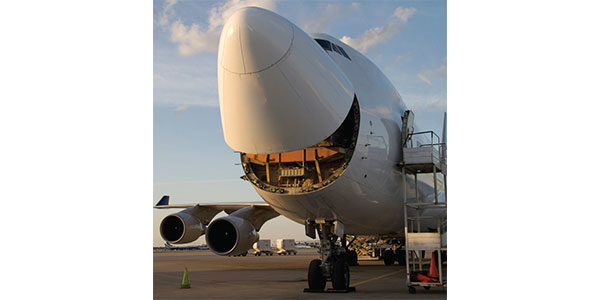Can the air cargo industry be saved?

An industry that's been steadily losing altitude for nearly 20 years is likely to struggle for a while longer, according to a group of international air cargo executives.
Cargo heads surveyed earlier this month by the International Air Transport Association (IATA), the global airline trade group, said they don't expect profits to improve over the next 12 months due to a cluster of challenges that will continue to plague the business. Global trade demand remains subpar, and cautious businesses appear willing to trade down in transit times by choosing a slower transportation mode in return for lower rates relative to air. About 42 percent of the cargo leaders expect volumes to grow over the next 12 months, the lowest proportion since April 2009, the depths of the "Great Recession." About 48 percent expect no change, and 9 percent forecast a decline in volumes.
The projections, if accurate, will prolong what has been a difficult 20-year cycle for air cargo. After strong growth in the 1980s and through much of the 1990s, the industry hit a wall when the dot-com implosion of 2000-2002 sparked a global recession and curbed demand for high-value information technology (IT) equipment that would typically be transported by air. In the ensuing years, cargo demand, while somewhat volatile, has remained mostly flat. This mirrors a slowing in global economic growth that made many shippers think twice about booking non-urgent shipments with premium-priced air services.
In the 1980s and 1990s, air cargo was marketed as a means of compressing order and inventory cycle times by getting goods to market faster than if they moved via land or sea. However, air transport's speed advantages have been diluted by the industry's inability to adopt digital processes that expedite the input and exchange of data between airlines and forwarders. This delays the release of airfreighted goods and lends credence to the old maxim that the typical airfreight shipment actually spends 80 percent of its time on the ground.
In the most recent cycle, the problem of slack demand has been amplified by a rise in global aircraft capacity, which has the knock-on effect of expanding the amount of lower-hold space where much of the world's air cargo is carried. The oversupply has driven down cargo yields—the revenue generated by flying one ton of cargo one mile—to levels not seen since the second half of 2009, according to the survey. About 90 percent of respondents said they expect yields to be unchanged or to fall over the next 12 months.
The tenor of the respondents' comments should not come as a surprise to IATA, which already forecast a 6 percent year-over-year drop in yields in 2016.
Ironically, the addition of aircraft capacity that is impairing cargo profitability is in response to a bullish outlook for passenger business, which accounts for the lion's share of an airline's revenue. About 68 percent of airline CFO respondents expect passenger volumes to rise over the next 12 months as terrorism-related disruptions fade and falling fares help stimulate demand.
Capacity is also being propped up by the dramatic drop in jet fuel prices, which has allowed airlines to keep more fuel-guzzling planes flying when they might otherwise have been grounded if prices were higher. In June, the spot, or noncontract, price for a gallon of jet fuel stood at $1.38, according to the U.S. Energy Information Administration (EIA), a unit of the Department of Energy. In June 2014, a gallon on the spot market was priced at more than $2.88.
Jet fuel prices have recovered from the multi-year low of 93 cents a gallon set in January. Still, most respondents to the IATA survey expect operating costs to remain unchanged or fall further for the next 12 months. This is due in part to the carriers' practice of fuel "hedging," where they place bets on commodity markets to protect themselves against an expected price move in the product.
Low fuel prices depress cargo yields by reducing the revenue that is captured by jet fuel surcharges. According to estimates by Chicago-based aircraft manufacturer Boeing Co., fuel surcharges affect 40 percent of world air cargo prices.
In the latest edition of its biennial world air cargo forecast, which was published in 2014, Boeing said it expected global traffic to climb by 4.7 percent a year through 2034, spurred in part by increasing consumer and business demand in far-flung markets away from traditional trade lanes. However, those markets today offer more potential than they do results, and any growth there does not offset weakness in the traditional air cargo trade lanes.
Related Articles

Copyright ©2024. All Rights ReservedDesign, CMS, Hosting & Web Development :: ePublishing